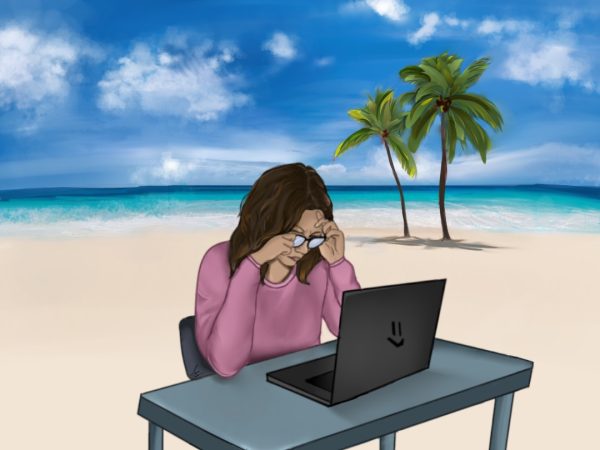OPINION: Virtual learning should always be an option
If the craziness of COVID-19 has taught us anything, it is certainly innovation. As we try to move on from this chaos, (despite skyrocketing numbers demonstrating we are not ready to move on) we have revoked the innovation, specifically remote learning, which we previously worked so hard to adapt to last school year. The group video call program Zoom has been our lifesaver, providing schools with a useful alternative when in person interaction needed to be restricted. However, the powers of Zoom are only being utilized to solve COVID related issues, while ignoring the copious other reasons for in school absences.
Although living life through Zoom calls was definitely an adjustment, Zoom proved remote learning was a temporary solution that worked; students could still experience an effective day of learning from anywhere they pleased. Just because the school has diluted the impacts of COVID by deciding that remote learning is only necessary during a state of emergency, it does not erase the fact that Zoom works. There is no reason to ignore the issue of an abundance of absences when we have the remedy right in front of us.
Of course, the main priority of Zoom learning should be to aid those exposed to COVID or recovering from the sickness. Especially with the need for an extended quarantine, remote learning smoothly allows students unable to come to school to still be present and not fall too far behind. But why should it stop there? Whether it is a college visit, a mild cold or even a snow day, students should be able to log into their classes as normal, without facing the penalties of an absence. Missing a single day of school can result in an overwhelming amount of makeup work, missing grades and lack of vital notes. If students are in a position that does not completely obstruct them from attending class, they should be able to do so. The perfect and efficient resolution is Zoom.
The immediate question is that people will take advantage of this concept and always choose virtual learning, but the answer is simple. Administration can limit the number of virtual days, not the number of missing in person days. Instead of consequences for too many absences, the same exact rules can be applied for having too many virtual days. Similarly to the in person policy, certain Zoom absences can be excused with forms like a doctor’s note to preserve a student’s number of allowed absences.
The simple fact is that we have evolved past the need for absences. No matter how much I love myself a good snow day, the truth is it’s just not necessary. This should be applied to all kinds of absences, but instead we avoid this progression in fear of the return to fully virtual. I certainly never want to return to a life solely consisting of staring at a computer screen either. However, knowing I have the resources to attend school even if I can’t physically, but I am forced to face the crushing heaps of work from one absence, seems silly to me.








![[VIDEO] School Spotlight for Spring 2025](https://thewessexwire.com/wp-content/uploads/2020/03/westessex-475x356.jpg)
![[VIDEO] Varsity Media Day: Winter 2025](https://thewessexwire.com/wp-content/uploads/2025/02/vmd-25winter-600x450.jpg)

